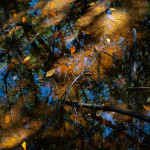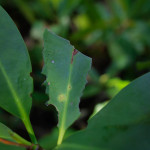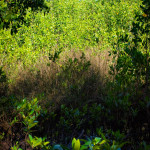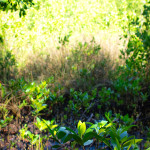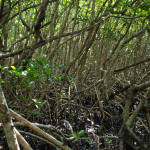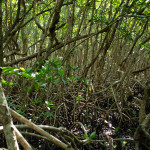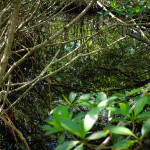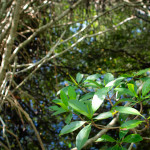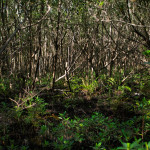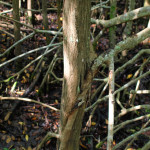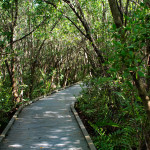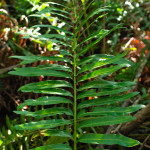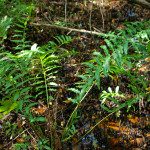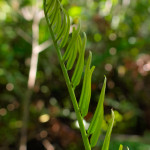Herbivory and decomposition are important processes in Florida mangroves.
Tag Archives: 4-mile Cove
Mangrove transition
Black needle rush to red mangrove succession at 4-mile Cove Ecological Preserve.
Red Mangrove Expansion
The Red Mangrove, Rhizophora mangle, reaches the ends of its ranged near Cape Coral, Florida, as did the black mangrove. However, climate change has allowed for mangrove range expansion, likely due to a decrease in the frequency of extreme cold events per year (Cavanaugh 2013 PNAS).
Having seen Costa Rican red mangrove, and those at 4-mile Cove pictured here, the lack of cold tolerance in the trees is clear: the Costa Rican mangroves stand much taller and have a lower stem density (# of trees per area) than those in Florida, because of periodic (on the order of decades) frosts or cold events that wipe most of the trees out in Florida.
Mangrove Panorama
Black mangrove
Black mangrove, with their distinctive pneumatophores, were common at Estero Bay Nature Preserve, but (anecdotally) don’t seem to be fairing as well at 4-mile Cove Ecological Preserve, where red mangrove seedlings cover the understory.
Mangrove fern
I think this is a salt-tolerant mangrove fern, Acrostichum aureum, inhabiting the understory of mangroves in southern Florida’s 4-mile Cove Ecological Preserve.
I’ve also seen this species in Costa Rica, where it lines some of the banks at the mouth of Rio Sierpe, and has colonized some wetlands in Guana Caste.

